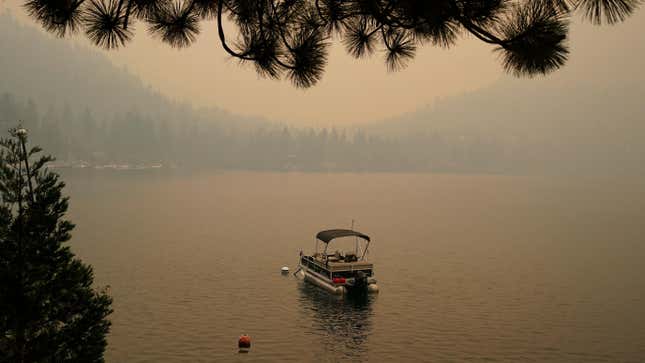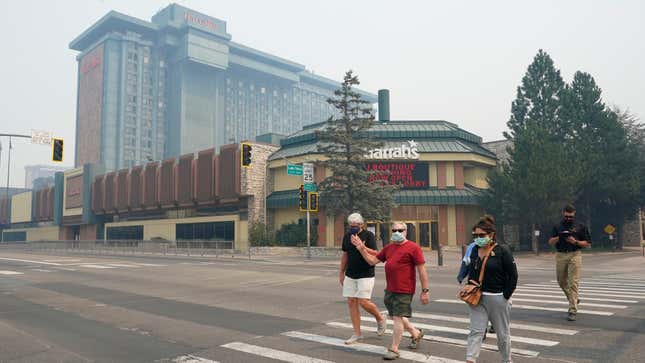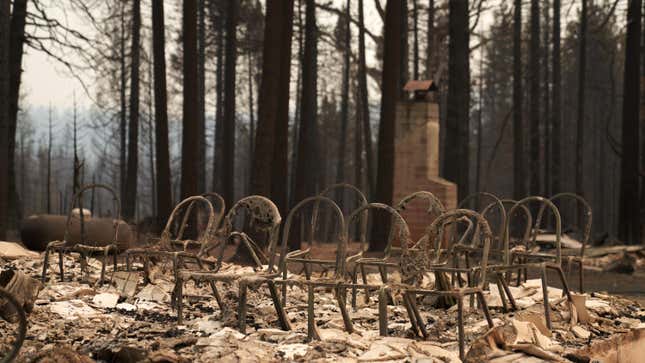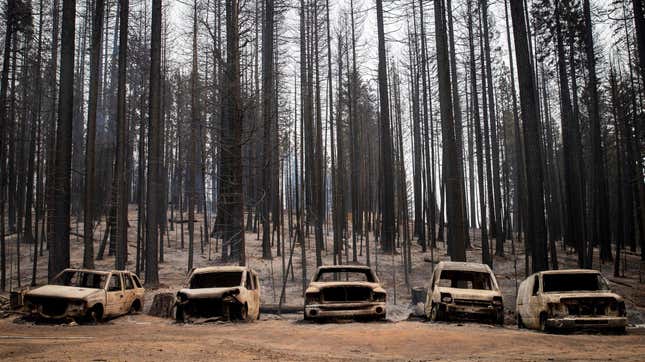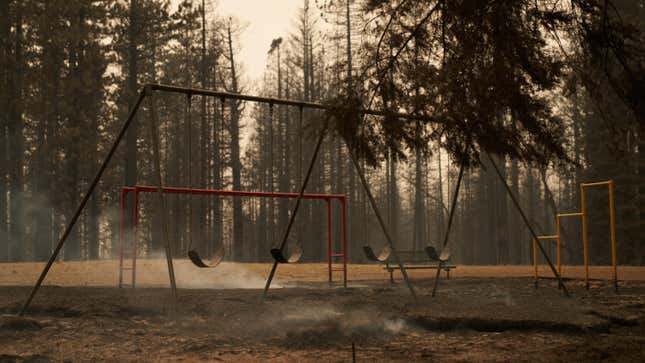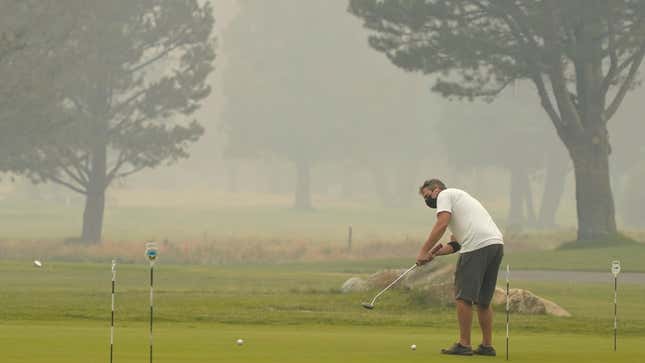
The Caldor Fire is California’s latest megafire in a wildfire season from hell. It’s among a number of unchecked blazes, but this one hits slightly different because it’s encroaching on the Lake Tahoe basin.
The fire has continued to march eastward from its ignition point in the El Dorado Forest, engulfing more than 450 structures along the way. The fire front now sits roughly 13 miles (21 kilometers) from South Lake Tahoe, a tourist hot spot. As 2,531 firefighters battle the blaze, it appears to be business as smoke-choked usual in Tahoe.
Images show people in the resort town, casinos, and surrounding recreation spots acting out some semblance of normal life even as ash rains down and fires burn ever-closer. The above photo captures the surreal hell as a man plays golf in a mask to keep smoke or covid-19 (or both) at bay.
A green golf course in California is also, of course, a symbol of what’s wrong with the West right now. The region is gripped in a profound megadrought, fueled by the climate crisis, that has primed forests to burn. It’s also triggered water supply cuts to parts of the region. Reservoirs in the state have plunged to record lows, causing a dropoff in hydropower production and widespread fish dieoffs as waterways become too warm for salmon to navigate.
The putting green in the midst of apocalypse is only one of the profoundly unnerving images that define our times and the increasingly weird juxtapositions between everyday life and losing everything. Let’s take a tour through the corner of California’s hell.
